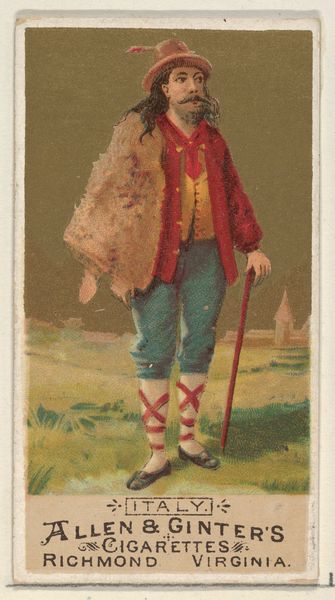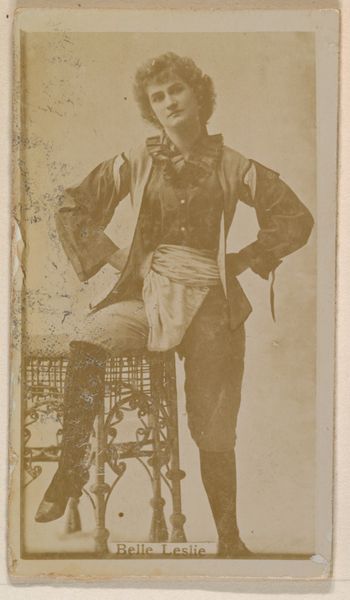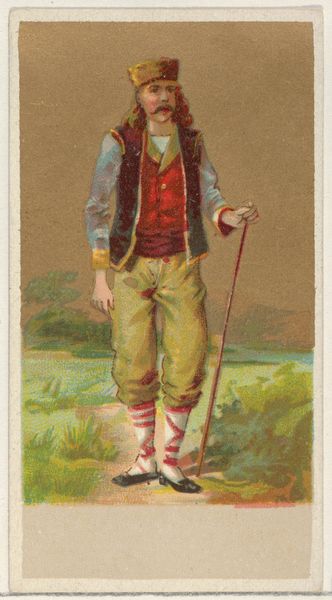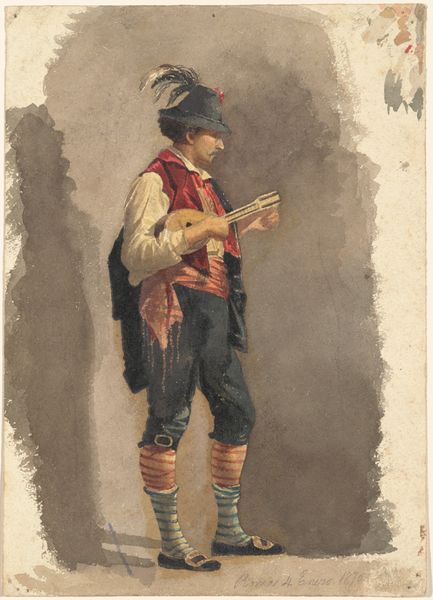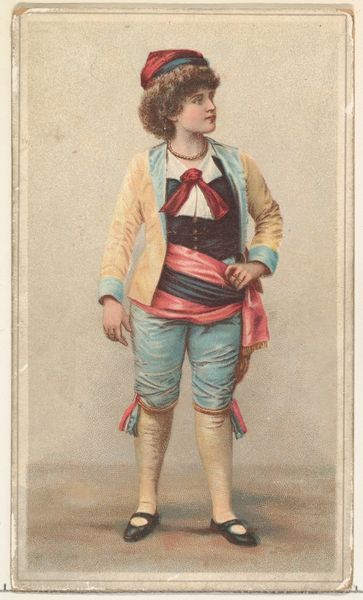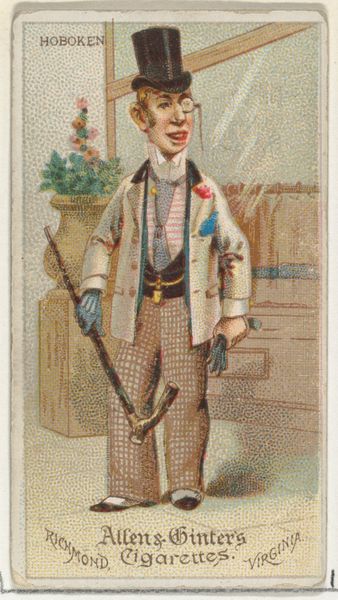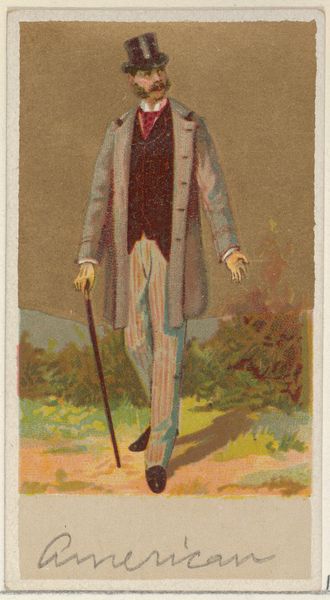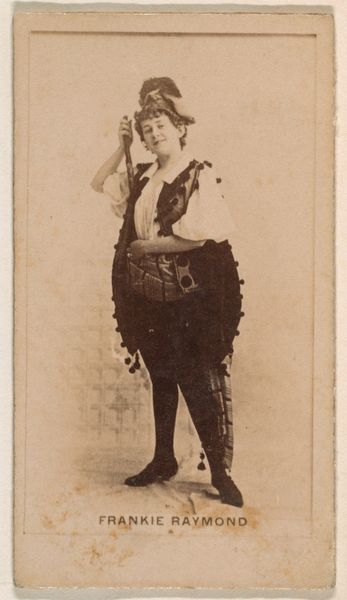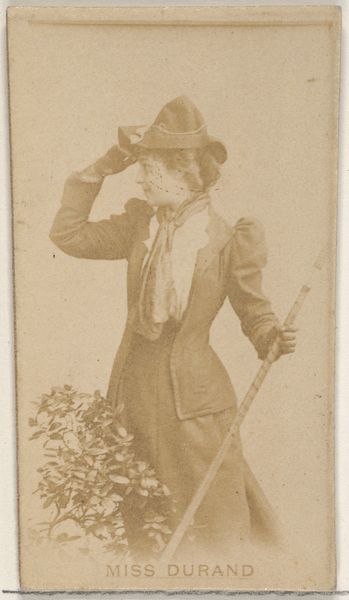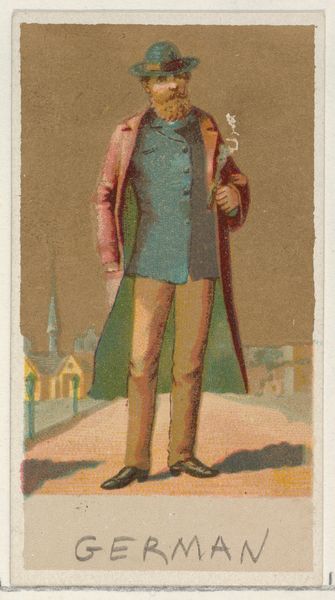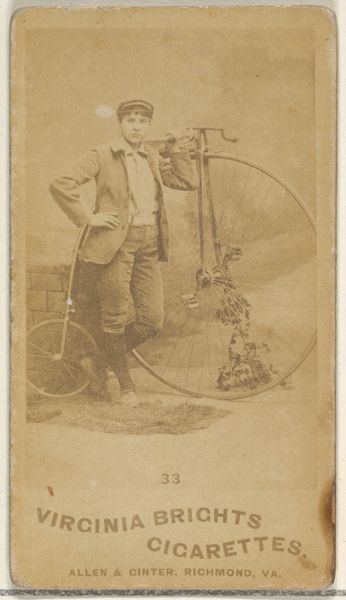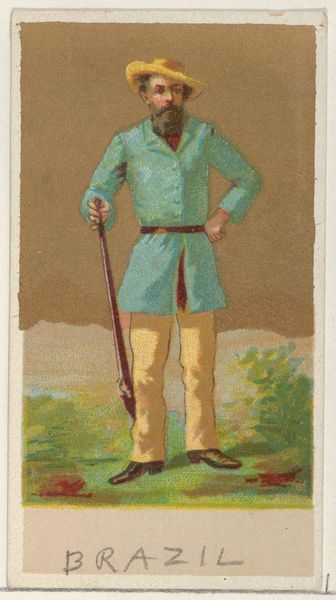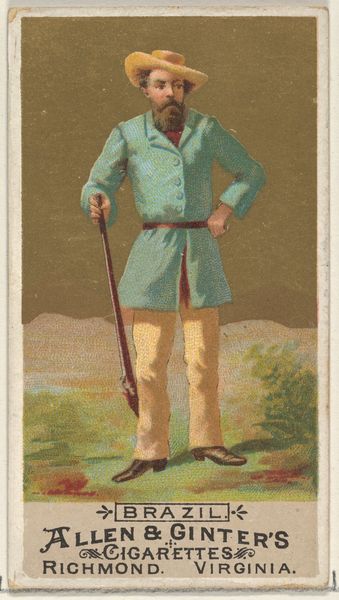![[Studio Portrait: Painter, Venice] by Carlo Ponti](/_next/image?url=https%3A%2F%2Fd2w8kbdekdi1gv.cloudfront.net%2FeyJidWNrZXQiOiAiYXJ0ZXJhLWltYWdlcy1idWNrZXQiLCAia2V5IjogImFydHdvcmtzLzRkZmYyMTQ1LTQ3MjAtNDU5Zi04YzIwLTVlZjFmODBiNTI2MC80ZGZmMjE0NS00NzIwLTQ1OWYtOGMyMC01ZWYxZjgwYjUyNjBfZnVsbC5qcGciLCAiZWRpdHMiOiB7InJlc2l6ZSI6IHsid2lkdGgiOiAxOTIwLCAiaGVpZ2h0IjogMTkyMCwgImZpdCI6ICJpbnNpZGUifX19&w=3840&q=75)
Dimensions: Image: 9.5 x 5.8 cm Mount: 10.2 x 6.2 cm
Copyright: Public Domain
Curator: This is a studio portrait of a painter in Venice, taken by Carlo Ponti sometime between the 1860s and 1870s. The photograph is currently held in the collection of the Metropolitan Museum of Art. Editor: It's charming, isn't it? He’s presenting the tools of his trade – the brush, the palette loaded with colors, the humble bucket. There's an unvarnished quality here; it's immediate, like witnessing a slice of Venetian working life. Curator: Exactly. This image exists within a complex intersection of realism and romanticism. While it depicts the everyday labor of a painter, the photograph is also very consciously constructed, idealizing the genre painting, or life painting. Ponti isn't just capturing a man; he's invoking a specific, perhaps even nostalgic, idea of the artist. Editor: You can certainly feel that construction, yes. The light seems carefully arranged to show all the materials--the quality of the wooden shaft of the painting brush and the textured surface of his working clothes. Note the simple shirt with its stripes. I want to know about the process--how much manipulation of this tintype image would there have been? Curator: Well, that gets us into the social and economic realities of art production at the time. Photography, like painting, was becoming increasingly accessible as a profession. By representing his profession in such a romantic, accessible light, this is likely also how Ponti understands the cultural weight of being a photographic artisan, as well. Editor: Yes, absolutely! It underscores the layers of representation, not just of the subject but the image maker. The act of the making visible. Curator: And if we look at similar artistic portraiture, like Gustave Courbet’s self-portrait as "The Desperate Man", we see shared themes of artistic identity and social position. There's this inherent tension, too, between portraying an idealized self and acknowledging the material conditions of the artist's existence. Editor: That makes me consider its accessibility even more—bringing this kind of working-class archetype to the walls of middle-class consumers is so incredibly revealing about class and cultural capital. Curator: Precisely! Analyzing through these various intersectional lenses gives us so much more insight than looking only at one approach. Editor: It's funny how the object gives so much life to ideas and concepts. This image of such a mundane person in Venice gives us new considerations about history, identity, labor, and material. Thank you for speaking with me! Curator: The pleasure was all mine. Thanks for offering a fresh and varied material lens.
Comments
No comments
Be the first to comment and join the conversation on the ultimate creative platform.
